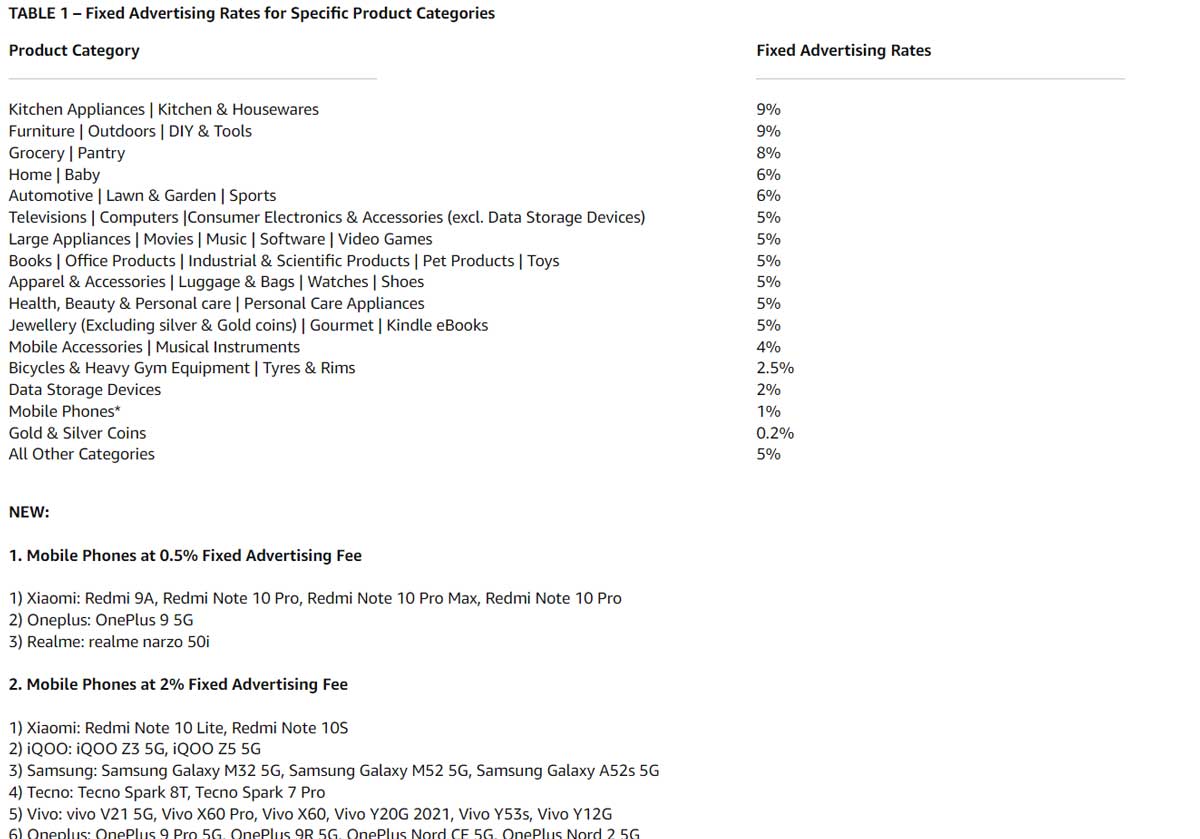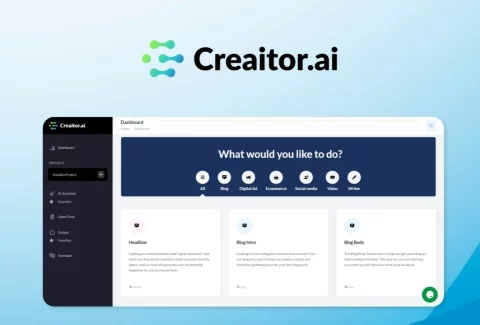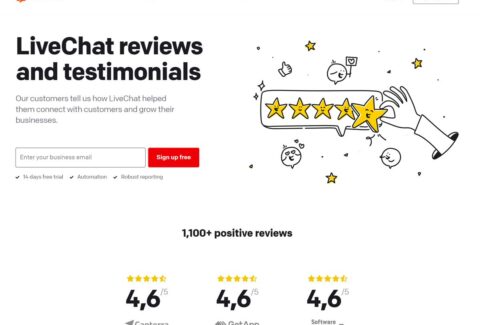What is Affiliate Marketing?: The Complete Guide
February 21, 2022 2022-06-13 12:57What is Affiliate Marketing?: The Complete Guide
What is Affiliate Marketing?
Affiliate marketing is becoming increasingly popular as a source of passive income.
This article is a complete guide to affiliate marketing from the point of view of an affiliate marketer.
This Article Contains:
1. What Is Affiliate Marketing? The Meaning
2. How Does Affiliate Marketing Work?
- Parties involved in an Affiliate Marketing System
- How These Parties Interact
3. How Do Affiliate Marketers Get Paid?
- 1. Pay-Per-Sale.
- 2. Pay-Per-Lead
- 3. Pay-Per-Click
4. How Much Money Can You make through Affiliate Marketing
5. Examples of Some Affiliate Marketing Programs
- Amazon Affiliate Marketing Program
- Shopify Affiliate
- Yatra.com’s Affiliate Programme
What Is Affiliate Marketing?: The Meaning
What is affiliate marketing? The answer lies in a simple concept.
You recommend a product to someone. If they buy it, you earn a commission.
How?
So basically, when you wish to recommend a particular product, you register into its affiliate programme. When you enroll, you get an affiliate link.
Now, You have to convince people to buy that product through your affiliate link. Every time someone buys, you earn a commission.
Your job here is to get more and more people to buy through your link. So that you earn more commission.
Note that you don’t manufacture the product here. You just recommend/sell someone else’s product.
You might wonder that there are various sources of side income. What makes affiliate marketing so special ?………
There are two benefits of affiliate marketing:
1. You don’t need money:
Since you don’t have to develop a new product, you don’t require any investment. All you need to do is sell their products online. However, you’ll have to invest some time to figure out how to sell the product on the internet.
2. Put your hands in more than 1 product:
You get the opportunity to recommend more than one product. As such, you can earn from multiple affiliate programs at the same time.
Note: Affiliate programs have their own terms and conditions. For example, Some affiliate programmes don’t allow you to run PPC ad campaigns. As an affiliate marketer, you’ll have to comply with these.
How Does Affiliate Marketing Work?
So far, we’ve understood what is affiliate marketing.
In this section, we’ll look at the various parties involved in an affiliate marketing system, and the way they interact with one another.
Parties Involved In An Affiliate Marketing System
4 parties are involved in a typical affiliate marketing system.
1. The Brand/ Advertiser/ Merchant
These are the manufacturers/sellers of the product. They wish to use a middle-party to sell more. And so, they create affiliate programs and invite people(would-be-affiliates) to enrol for it. For each sale an affiliate brings, the brand pays him/her a certain commission.
2. Affiliates/ Publishers/ Partners
This will be you.
These are the people who enrol into the brand’s affiliate programme. For each sale they bring, they earn a certain commission. More sales= more income.
3. Affiliate Networks
These are marketplaces that help brands and affiliates find each other.
Some of these networks also offer to manage a brand’s affiliate marketing program. They take care of operations like creating unique affiliate links, managing payment and ensuring that the guidelines are followed. Some examples are: Avangate Affiliate Network, ClickBank and FlexOffers.
4. Consumers
These are the buyers who purchase through an affiliate’s link.
How These Parties Interact?
Here’s how all the above-mentioned parties interact with one another.
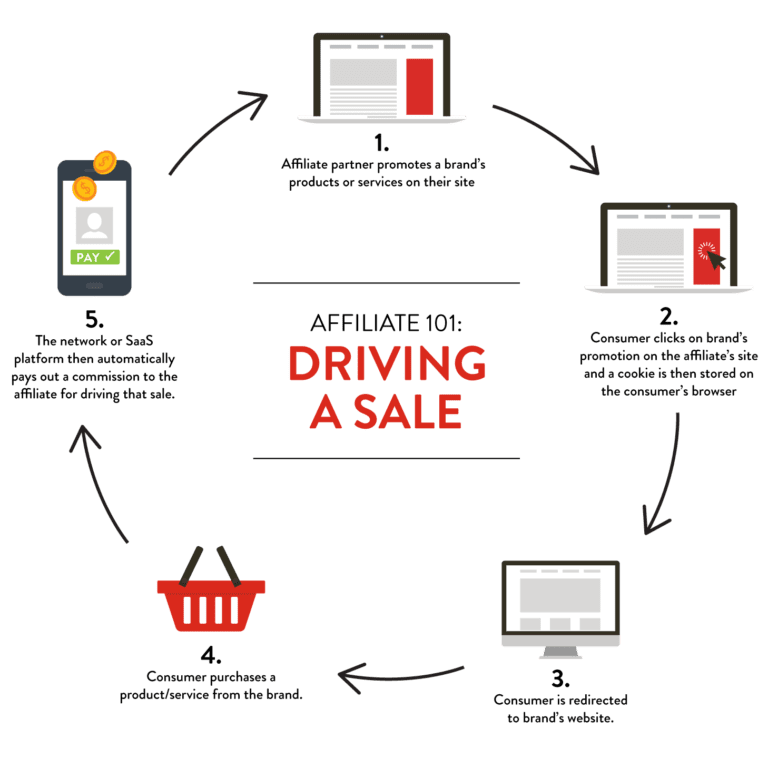 Source: accelerationpartners.com
Source: accelerationpartners.com
After entering into the brand’s affiliate program, each affiliate gets their affiliate link.
They share this link with the audience.
Whenever a viewer clicks on the affiliate link, a cookie file gets stored on their device.
If this viewer buys the product within a specified period (generally 30 days), the brand can track that the sale was made through the affiliate. And accordingly, reward them with the pre-specified commission.
For example, someone clicked on your affiliate link but didn’t buy the product. However, they buy it the next day. The cookie stored on their device lets the brand track that the lead came through your affiliate link. Hence, the sale is rewarded to you.
How Do Affiliate Marketers Get Paid?
We know that the brand pays an affiliate marketer some commission per sale. But, that’s the common method. Not the only method.
The different methods for calculating an affiliate’s commission are:
1. Pay-Per-Sale
Brands pay a certain percentage of the sale amount to the affiliate.
In many cases, this isn’t a percentage but a fixed amount.
2. Pay-Per-Lead
In this model, brands pay the affiliate a fixed commission on every lead.
For example, the lead magnet set by the brand is “e-book download”. So for every ebook downloaded through the affiliate’s link, they earn a specific commission.
3. Pay-Per-Click
The affiliate earns a commission for every website visitor they get. This goes regardless of the conversion or sale.
How Much Money Can You Make Through Affiliate Marketing
Clearly, How much you earn directly depends on how you perform.
You already knew this. Didn’t you?
We’re trying to point out the great earning potential of affiliate marketing. Stats say that, not us.
According to Statista, businesses will spend approximate of $8.2 billion on affiliate marketing in the U.S by 2022.
At the Digital Asia Summit, India’s top Affiliate marketer Kulwant Nagi declared that he so far generated $700,000 from affiliate marketing only.
According to 99 firms, 35% of affiliate marketers make more than $20,000 a year.
An Investopedia survey states that 9% of respondents made more than $50,000 in 2016.
Examples of Some Affiliate Marketing Programs
Various companies run their affiliate marketing programs. Some of them are:
1. Amazon Affiliate Marketing Program
It’s one of the most popular affiliate marketing programs in the world.
Since Amazon has a large variety of products, different product categories have different affiliate commissions. You can find the category wise affiliate percentage in the Operating Agreement which looks somewhat like this.
Notice the fact that amazon doesn’t manufacture the products here. Amazon is a retailer.
It wants people to buy through Amazon. That’s why it markets the products through affiliates.
Shopify is a platform for businesses to set up their online stores.
It offers an affiliate program whereby you earn a commission for referring merchants.
Suppose a merchant uses your referral link to sign up to the 14 day free trial. When the trial ends, and the merchant becomes a paying customer, you earn a one-time commission.
The lead is valid for 30 days. i.e, if the merchant signs up for the 14 day free trial within 30 days of clicking on the affiliate link (and then buys), the sale is awarded to the affiliate.
3. Yatra.com’s Affiliate Programme
Yatra.com is an Indian travel and tourism based company.
It’s affiliate program gives commission for each query received through the affiliate.
The programme has a 30-day cookie tracking system.
Similar to these three, there are many affiliate programs by different brands. You can identify various affiliate programmes in your niche
Steps To Become An Online Affiliate Marketer
Start your Affiliate marketing journey with the following roadmap:
First, Research And Learn
Learn affiliate marketing. That’s the first step.
Read more blogs, watch videos and try to understand the affiliate marketing landscape. Have a look at different affiliate marketers. Closely analyze the products they promote and how they promote them.
Collect as much information as you can. Read across industries and interests to collect varied ideas.
Learning isn’t an onboarding process. It’s an ongoing process. Do it constantly throughout your affiliate marketing journey.
Second, Choose A Niche
Choosing a niche is super-important.
Some people have their niche sorted right at the first step. But for others, it’s a crucial decision.
Keep various factors into consideration while choosing your niche. Like your familiarity with the niche, different affiliate programmes, affiliate competition etc. And lastly, your willingness to learn more about it.
Sticking to a niche is important. As it helps build an audience. And build authority among that audience.
Apologies if it got a bit technical. Let’s take an example.
Suppose your chosen niche is beauty products. The buyers or prospects of the first product( say a lipstick) might also be the buyers/ prospects of the other products (like Mascara, Kajal pencils, blush etc.) you’ll recommend.
And so, the audience you build for the first product will help in selling every future product. You won’t have to start from point 0 again.
Third, Choose Your Affiliate Channel
You found your niche. You enrolled on an affiliate programme. You got your affiliate link.
Perfect!
Now, how will you share this affiliate link with your audience?
Will you share it through a blog? Social media? Youtube? Events? Emails?
What are you gonna do?
Choose the channel your audience uses the most.
Either use a combination of 2 or more channels or use different channels for different audience segments. Devise your strategy.
You can also create a website dedicated solely to the purpose of finding products related to a particular niche. www.thisiswhyimbroke.com is a great example of such a website.
Conducting joint venture webinars on niche-specific topics is also a great way to reach your prospects. Webinars might act as content bait. Take that opportunity to demonstrate the use of your product.
Whatever you do, understand your audience and some basics of the platform.
If you’re going for blogs, understand the basics of Google SEO.
If you’re going for Youtube, understand Youtube SEO.
If you’re going for social media, read more on how to increase your visibility.
Fourth, Share The Affiliate Link
The Last, but the most important step.
The problem statement is: How to share the affiliate link on the selected channel (s) such that more users are incentivized to click it?
Sharing the link isn’t enough. You’ll have to market it.
Generally, this involves two steps:
- Creating related content
- Promoting that content
a) Creating Related Content
Reviews are the most widely used content in affiliate marketing.
There’s a great possibility that your high funnel prospects (someone who’s almost convinced) are looking for a detailed review of the product.
To grab their attention (since they’re more likely to convert), you may:
- Write an honest review
Highlight the features, pros and cons of the product. Share the pricing structure and your personal opinions.
Make the review valuable in guiding their purchase decision.
You may create single reviews or round-ups. Roundups refer to a listicle review. For eg, a review of the top 10 email marketing tools. Reviews comparing two products are highly valued.
According to a recent Google Product Review Update, including visuals like product images and unboxing videos makes the review article rank higher.
And if you can provide links to multiple sellers, even better.
- Create a product tutorial
Show how to use the product. Demonstrate its features, benefits and uses practically. It helps you target highly valuable “How-To” search terms.
- Interview a product expert
Interview the seller or someone who uses the product frequently.
Talk to them about the product and its benefits. Ask them how the product helped them achieve their objective.
In all these cases, add your affiliate link at the end of the content.
Depending on the affiliate commission and the resources you have, decide how much time you can invest. Is it worth it?
b) Promoting The Content
There are various techniques to promote the content you’ve created.
- SEO- It helps your content rank higher on the SERP. If you’re writing a blog, use keyword research tools to look for keywords that people use to find your content. Select some high search volume keywords and optimize your content accordingly.
- PPC- Apart from SEO, you can also promote your content/ affiliate link through paid ads.
Not only Google ads, but ads on social media networks like Facebook and Instagram as well.
- Content Bait- Ask for the viewer’s email id in return for exclusive content like an ebook or a specific product comparison. This way, you get the prospect’s email id which you can use to nurture the prospect later.
- Webinars- as discussed above, you can also conduct webinars once in a while. Talk about a topic that’s trending in the industry. During the webinar, pitch your product in a natural way.
Quick Facts To Know Before You Go
This guide on what is affiliate marketing would be incomplete without stating the following facts.
- According to research, About 37% of online shoppers made their first purchase through an affiliate channel.
- Affiliate marketing is famous for generating passive income. However, after a while, many affiliate marketers turn it into a full-time business. They launch their courses to train the upcoming affiliate marketers.
- It’s important to tell the consumers that they’re buying through an affiliate link. Give a short disclaimer.Wanna learn more about Affiliate Marketing? Find some affiliate marketing blogs here
- Charles Ngo has been in the affiliate marketing space since 2007. You can subscribe to their email to get free content and cheat sheets.
- You can also go through Martin Osborn’s list of the best affiliate marketing blogs.

1. Send-in-blue
Features
Send-in- blue makes it easier for you to:
Pricing
The free plan allows you to send a maximum of 300 emails per day. As you move to a higher paid plan, more emails and more features are added.
Have a look at the complete pricing plan.
Reviews
We (Digital Asia Community) have collected some reviews of the tool. You can read more here:
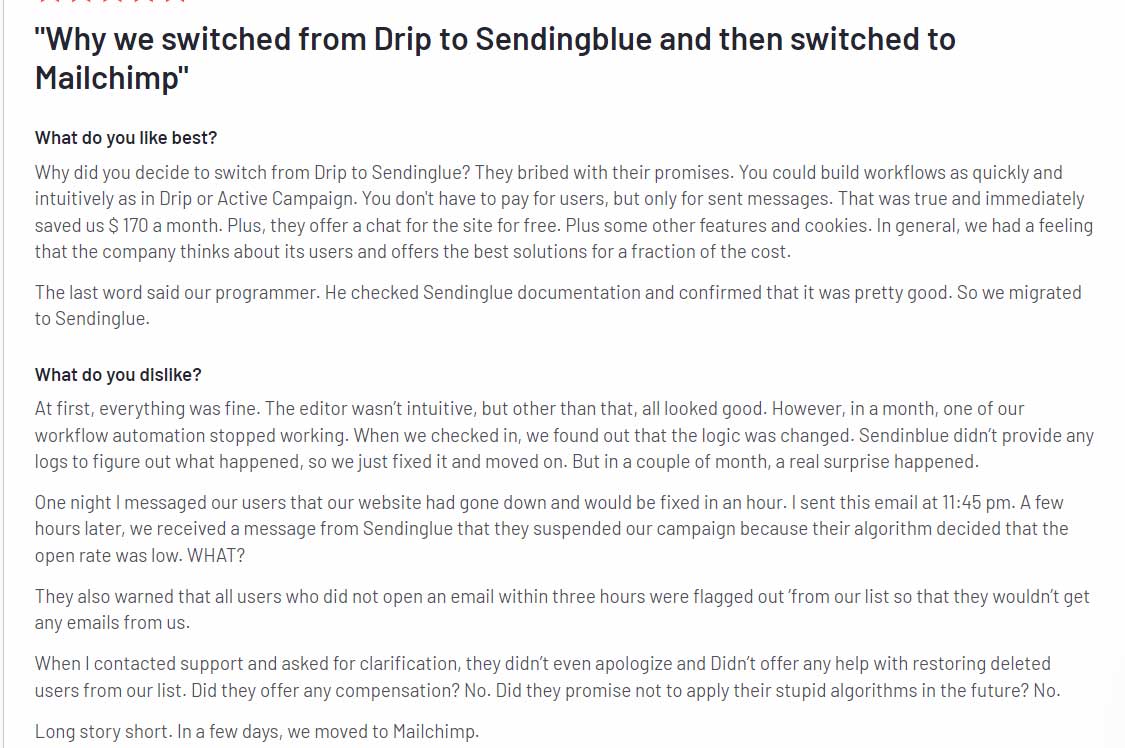
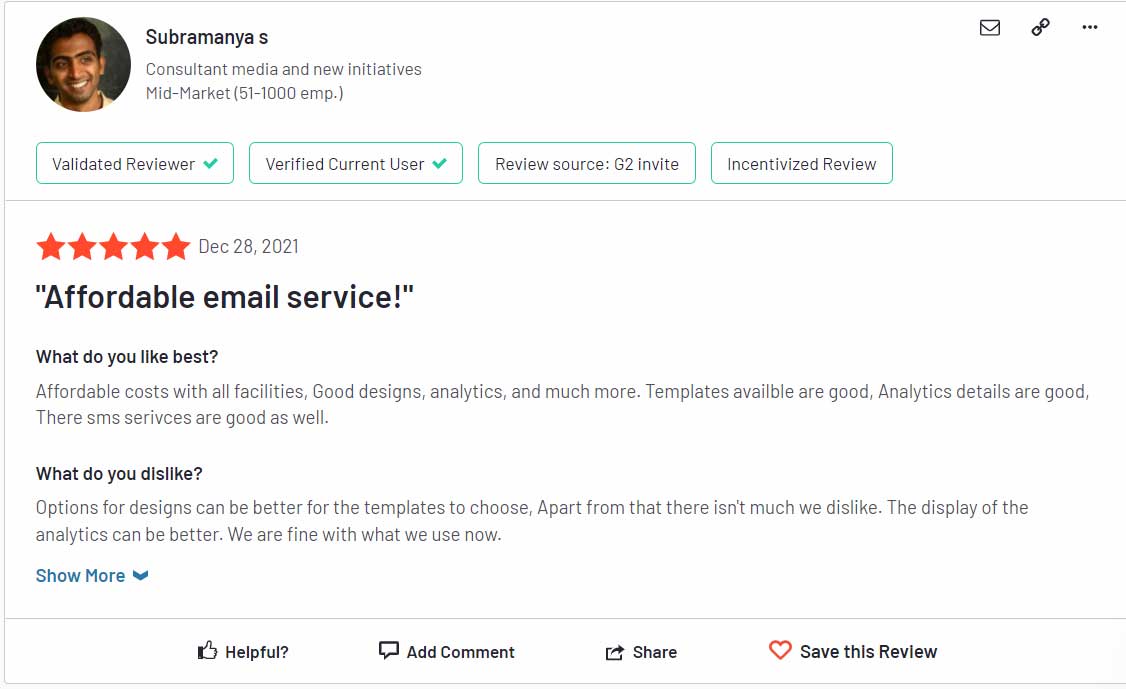
2. Drip
Features
- Specialises in e-commerce email marketing automation.
- Integrates with various websites like Shopify, Magento, WooCommerce, BigCommerce and Custom Store.
- Its email automation sends personalized bulk emails.
- Also offers other features like creating forms, pop-ups and SMS marketing.
Pricing
Drip’s plans start from $19/ month. It offers a free trial to start with. The cost of your plan depends on the number of active people in your account, number of emails and SMS you send per month.
Reviews
We’ve selected the two most unbiased reviews. You can read more reviews here.

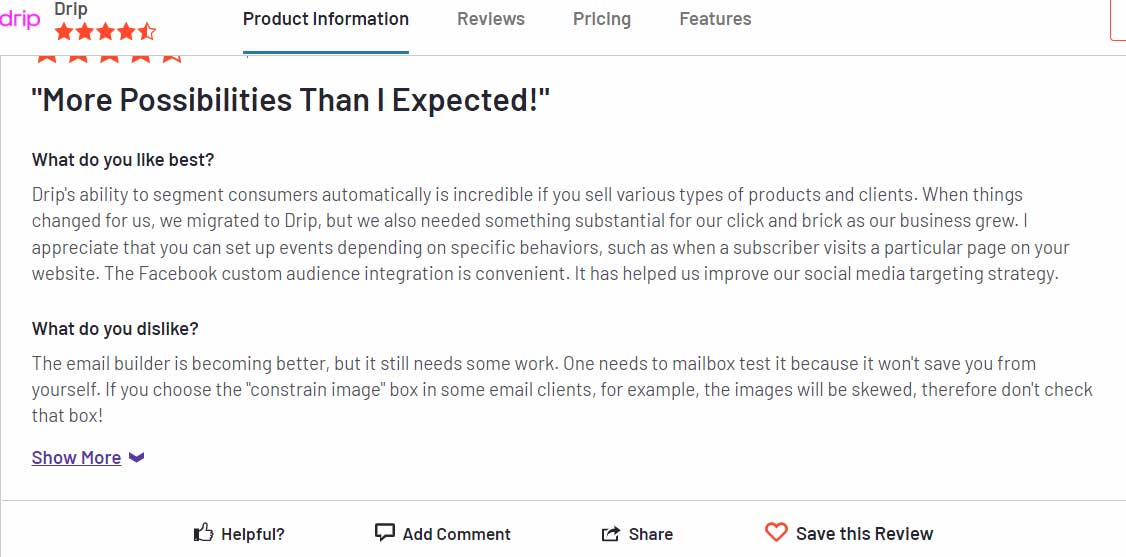
3. Mailchimp
Features
- You may choose to get ready-made designs for your brand, use templates or code your own template.
- The Subject Line Helper helps you design some clickbait headlines.
- Mailchimp automatically sends emails based on customer behaviour.
- It also gives you access to email analytics.
- You can use the tool as a mobile app.
- Mailchimp integrates with various website builders and social media platforms.
- It allows you to A/B test different emails.
Pricing
Mailchimp offers a free plan. But it doesn’t give access to many of the above-mentioned features.
You can have a look at the complete pricing structure here.
Reviews
A lot of reviews suggest that it’s a great tool. Butconsidering other tools available in the market, it’s not worth the price. You may read reviews here.
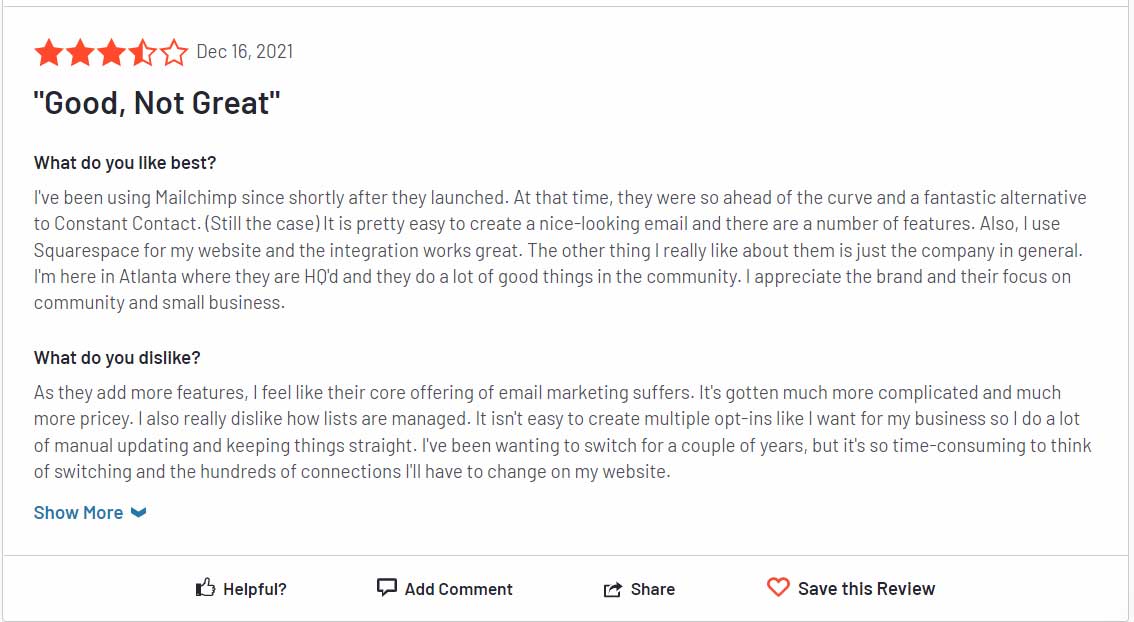
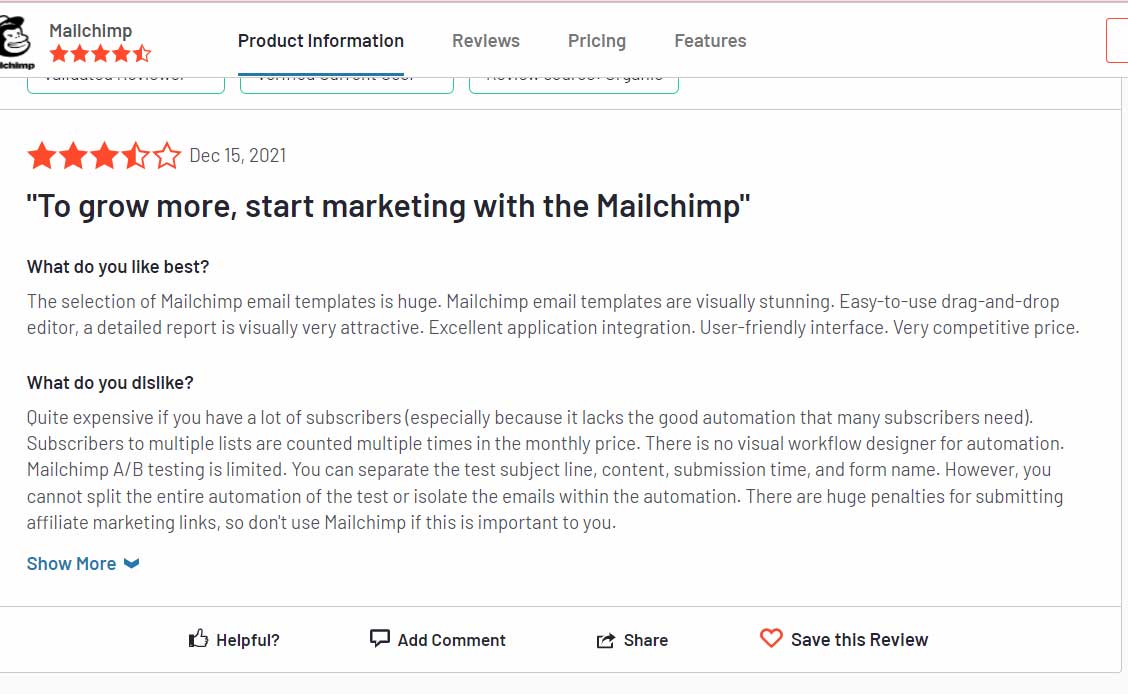
4. Moosend
Features
- Moosend’s personalization isn’t restricted to writing personalized email subjects. It goes to the extent that you can send personalized product recommendations and even weather-based recommendations.
- The tool has a lot of landing page templates to choose from.
- Its powerful analytics help you make well-informed decisions. Moosend shows metrics like open rate, click-through rate, bounces, product views, purchase data, demographics data and event tracking.
- Makes it easier to build an email list for marketing. It allows you to design your own opt-in forms.
- The tool also offers marketing automation, even in the free plan.
Pricing
Moosend has a unique pricing model. The cost of a particular plan depends upon the number of subscribers or the number of emails sent, whichever is less expensive.
Reviews
Most reviews praise its features and user-friendly interface. However, the same reviews also point to some problems here and there.
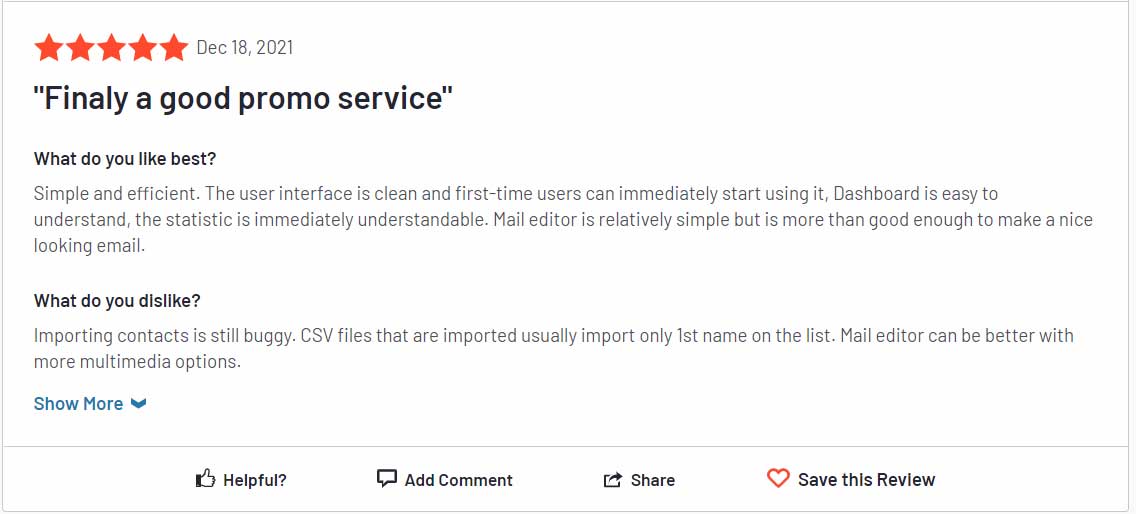

5. Mailgun
Features
- Mailgun offers email API’s for a developer’s email marketing needs.
- It’s not for someone with limited technical skills.
- It has a powerful sending infrastructure. And flexibility for designing your own email marketing campaigns and designs.
Pricing
Mailgun offers a free and 3 paid plans. The foundation ($35/month), the Growth plan ($80/month) and the Scale Plan at $ 90/month.
Check the complete pricing structure here.
Reviews
Most developers look satisfied with the features and services. However, some reviews also report pricing and interface issues.
You can check more reviews here.


Conclusion
Making a well-informed decision is the best way to invest your earnings.
Even after you go through reviews and pricing, choosing the best email marketing tool might be tough.
Because not one email marketing tool is the best for everyone.
Consider your needs. The features you can compromise and the features you can’t. Consider your budget and your team size and then decide on a tool.
Related Posts
Notion Review 2023: Is this Productivity Software any good?
LiveChat Review 2023 : Is this Web Live Chat Software any good?
Search
Popular posts
- How to Build a Multi-Vendor Services Marketplace Using WordPress: A Comprehensive Guide
- Creaitor AI Writing Tool Review 2023: Is this AI Writing Software any good?
- Notion Review 2023: Is this Productivity Software any good?
- LiveChat Review 2023 : Is this Web Live Chat Software any good?
- What is Affiliate Marketing?: The Complete Guide
Categories
Search
Popular products
-
All Access Pass - Digital Asia Summit 2022
₹499.00
₹4,999.00 -
Community Access Pass - Digital Asia Summit'22
₹799.00
₹7,999.00 -
LinkedIn Personal Branding Workshop
₹800.00
₹1,200.00


